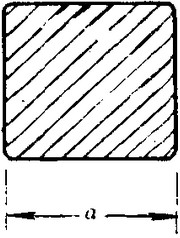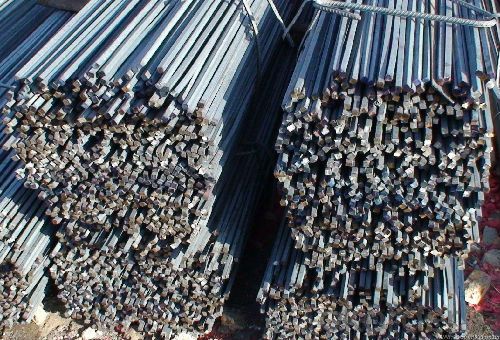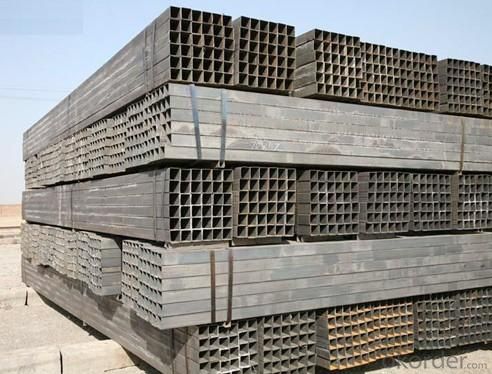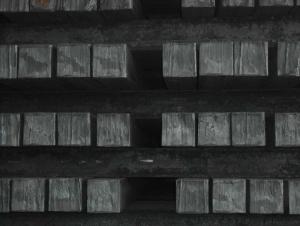Q235 Steel bilte steel bilte for construction
- Loading Port:
- Tianjin
- Payment Terms:
- TT or LC
- Min Order Qty:
- 10000 m.t.
- Supply Capability:
- 100000 m.t./month
OKorder Service Pledge
OKorder Financial Service
You Might Also Like
Product Description:
OKorder is offering Q235 Steel bilte steel bilte for construction at great prices with worldwide shipping. Our supplier is a world-class manufacturer of steel, with our products utilized the world over. OKorder annually supplies products to European, North American and Asian markets. We provide quotations within 24 hours of receiving an inquiry and guarantee competitive prices.
Product Applications:
Q235 Steel bilte steel bilte for construction are ideal for structural applications and are widely used in the construction of buildings and bridges, and the manufacturing, petrochemical, and transportation industries.
Product Advantages:
OKorder's Steel bilte are durable, strong, and resist corrosion.
Main Product Features:
· Premium quality
· Prompt delivery & seaworthy packing (30 days after receiving deposit)
· Corrosion resistance
· Can be recycled and reused
· Mill test certification
· Professional Service
· Competitive pricing
Product Specifications:
We offer Square Steel Bar with grade Q195 / Q235
Specifications of Square Steel Bar:
-Standard: GB,
-Grade: Q195/Q235 or equivalent.
Chemical Composition:
-Chemical Composition. Q195
Standard | Grade | Element (%) | ||||
GB | Q195 | C | Mn | S | P | Si |
0.06~0.12 | 0.25~0.50 | ≤0.050 | ≤0.045 | ≤0.30 | ||
-Chemical Composition. Q235
Standard | Grade | Element (%) | ||||
GB | Q235B | C | Mn | S | P | Si |
0.12~0.20 | 0.30~0.70 | ≤0.045 | ≤0.045 | ≤0.30 | ||
Measures and Tolerances of Square Steel Bar:

(The section of Square Steel Bar)
-The length of a side and the theoretical weight of Square Steel.
Length of a side(a, mm) | Theoretical weight(kg/m) | Length of a side(a, mm) | Theoretical weight(kg/m) |
6 | 0.283 | 32 | 8.04 |
7 | 0.385 | *33 | 8.55 |
8 | 0.502 | 34 | 9.07 |
9 | 0.636 | *35 | 9.62 |
10 | 0.785 | 36 | 10.17 |
11 | 0.950 | 38 | 11.24 |
12 | 1.13 | 40 | 12.56 |
13 | 1.33 | 42 | 13.85 |
14 | 1.54 | 45 | 15.90 |
15 | 1.77 | 48 | 18.09 |
16 | 2.01 | 50 | 19.63 |
17 | 2.27 | 53 | 22.05 |
18 | 2.54 | *55 | 23.6 |
19 | 2.82 | 56 | 24.61 |
20 | 3.14 | *58 | 26.4 |
21 | 3.46 | 60 | 28.26 |
22 | 3.80 | 63 | 31.16 |
*23 | 4.15 | *65 | 33.17 |
24 | 4.52 | *68 | 36.3 |
25 | 4.91 | 79 | 38.49 |
26 | 5.30 | 75 | 44.16 |
*27 | 5.72 | 80 | 50.24 |
28 | 6.15 | 85 | 56.72 |
*29 | 6.60 | 90 | 63.59 |
30 | 7.06 | 95 | 70.85 |
*31 | 7.54 | 100 | 78.50 |
Notes:
1, The theoretical weights in the list, base on the density of 7.85 g/cm3.
2, The numbers with *mean that they are not regulars or we don’t offer them.
-The allowed tolerance of Square Steel:
Length of a side(mm) | Allowed Tolerance | ||
Group1 | Group2 | Group3 | |
5.5~7 | ±0.20 | ±0.30 | ±0.40 |
7~20 | ±0.25 | ±0.35 | ±0.40 |
20~30 | ±0.30 | ±0.40 | ±0.50 |
30~50 | ±0.40 | ±0.50 | ±0.60 |
60~80 | ±0.60 | ±0.70 | ±0.80 |
80~110 | ±0.90 | ±1.0 | ±1.1 |
110~150 | ±1.2 | ±1.3 | ±1.1 |
150~190 | ―― | ―― | ±2.0 |
190~250 | ―― | ―― | ±2.5 |
Usage/Applications of Steel Square Bar:
-The Square Steel is normally used as structure steel.
-Row material for other structure steel like steel angles, channels, I-beams, H-beams, etc…
Packaging & Delivery of Steel Square Bar:
-Packing Detail: The products can be packed in bundles by steel wires.
-Marks:
1, Tag marks: the tag marks will be tied up to each bundle of the products. The information is usually including supplier’s logo and name, product name, made in China, products’ specifications, the painted color and other information requested by customers.
2, Color marks: we will paint both ends of the bundles of these products to make sure that they are more evident. It’s will be more convenient for the customers to distinguish them at the destination port.
-Delivery Detail: 30~45 working days after receive buyer’s T.T. or L/C.
Transportation:
-The products can be delivered by bulk vessel or by container. As for container, products with the length of 6m will be loaded in 20’ container, with 9m or 12m, in 40’ container.
-The maximum quantity of loading of container is 25 tons.
-The products usually are transported to the nearest port from the production place.
Payment:
-Invoicing on theoretical weight or actual weight a s customer’s request.
-FOB, CFR or CIF.
-Regular terms of payment:
1, 30% payment in advance, the remaining balance (70% payment) against the copy of B/L.
2, 30% payment in advance, the remaining balance (70% L/C) against the copy of B/L.
3, Negotiable.
FAQ:
Q1: How do we guarantee the quality of our products?
A1: We have established an advanced quality management system which conducts strict quality tests at every step, from raw materials to the final product. At the same time, we provide extensive follow-up service assurances as required.
Q2: How soon can we receive the product after purchase?
A2: Within three days of placing an order, we will begin production. The specific shipping date is dependent upon international and government factors, but is typically 7 to 10 workdays.



- Q:How do you use a steel square to lay out a hip rafter with unequal pitch?
- To lay out a hip rafter with unequal pitch, follow these steps: 1. Start by determining the pitch angles of both roofs that meet at the hip rafter. It's important to note that these angles will be different due to the roofs having unequal pitches. 2. Position the steel square on the tail of the hip rafter, aligning the shorter leg with the plumb cut of the rafter. 3. Use the longer leg of the square to mark the rise and run measurements based on the pitch angles of each roof. The rise represents the vertical height, while the run represents the horizontal distance. 4. Measure and mark the length of the hip rafter on the side with the plumb cut. Typically, this measurement is based on the overall length required for the hip rafter. 5. Connect the marks for the rise and run, extending the lines until they intersect with the mark for the overall length. This will provide you with the outline of the hip rafter. 6. Carefully cut along the outlined shape of the hip rafter using a saw. Precision is key to ensure a proper fit during installation. Always remember to double-check all measurements and angles before cutting the hip rafter. It's also advisable to consult a professional or refer to a comprehensive guide on using a steel square for more detailed instructions specific to your project.
- Q:How to hollow square steel welding
- Hollow square steel thin wall, should use special fixture precision counterparts, and retain the appropriate gap, in order to ensure the welding quality.
- Q:Can a steel square be used for checking the squareness of a shelf bracket?
- Yes, a steel square can be used for checking the squareness of a shelf bracket.
- Q:Can a steel square be used for measuring roof pitches?
- Yes, a steel square can be used for measuring roof pitches. The markings and angles on a steel square make it a useful tool for determining the pitch or slope of a roof.
- Q:How do you use a steel square to create a 45-degree angle?
- To use a steel square to create a 45-degree angle, you can follow these steps: 1. Start by placing the steel square on a flat surface or workbench, ensuring that it is properly aligned and straight. 2. Take a ruler or measuring tape and mark a point on the edge of the workpiece where you want the 45-degree angle to begin. 3. Next, draw a line extending from this point using a pencil or marking knife. This line will serve as a reference for your angle. 4. Align the steel square with the marked line, ensuring that the edge of the square is perfectly aligned with the line. 5. Now, pivot the steel square while keeping the edge aligned with the marked line until the opposite edge of the square intersects the line at a 45-degree angle. 6. Once you have achieved the desired angle, hold the steel square firmly in place to prevent any movement. 7. Finally, using a pencil or marking knife, trace along the edge of the steel square to transfer the 45-degree angle onto your workpiece. By following these steps, you can easily use a steel square to create a precise 45-degree angle on your workpiece. It is essential to ensure that your steel square is accurate and properly aligned to guarantee accurate results.
- Q:How do you use a steel square to measure and mark 258.75-degree angles?
- To achieve a measurement and marking of a 258.75-degree angle using a steel square, the following steps can be followed: 1. Place the steel square either on a flat surface or against the material's edge that requires marking. 2. Align the long side of the steel square along the desired angle's edge or line. 3. Confirm that the shorter side of the square is perpendicular to the long side and touching the material. 4. Employ a pencil or marker to designate the point on the material where the shorter side intersects the edge or line. 5. Proceed to locate the midpoint of the 90-degree angle formed by the steel square. This is accomplished by dividing the angle by 2, yielding 129.375 degrees. 6. Rotate the steel square in a manner that aligns the shorter side with the material's edge or line, while the long side points towards the recently calculated midpoint. 7. Once again, utilize a pencil or marker to mark the point where the shorter side meets the material. 8. The line connecting the two marked points should represent the desired 258.75-degree angle. It is vital to always verify your measurements and markings to ensure accuracy.
- Q:Are steel squares resistant to rust and corrosion?
- Yes, steel squares are generally resistant to rust and corrosion due to their composition and protective coatings.
- Q:Can a steel square be used for measuring lengths as well?
- Yes, a steel square can be used for measuring lengths as well.
- Q:What are some common uses of a steel square in construction?
- A steel square, also known as a framing square or carpenter's square, is a versatile and essential tool in construction. It is primarily used for measuring, marking, and verifying right angles, ensuring accurate and precise cuts and joints. Here are some common uses of a steel square in construction: 1. Layout and marking: A steel square is used to lay out and mark straight lines, angles, and perpendicular lines on various construction materials such as wood, metal, and concrete. It helps ensure precise measurements and angles for accurate cutting, drilling, and assembly. 2. Checking squareness: Steel squares are used to check if corners and joints are perfectly square, ensuring that structures, frames, and components are aligned properly. This is crucial for maintaining structural integrity and preventing issues like sagging or misalignments. 3. Cutting and shaping: The square's straight edges and angles are used as guides for cutting and shaping materials. It helps carpenters and masons make precise cuts, whether it's cutting rafters, framing studs, or marking and cutting notches and angles on different construction elements. 4. Roofing and stair construction: Steel squares are widely used in roofing and stair construction. They help layout and cut roof rafters, determine the angle and pitch of a roof, and ensure that staircases have accurate and consistent riser and tread dimensions. 5. Foundation and concrete work: Steel squares are used to ensure the right angles, levelness, and alignment of foundation footings, concrete walls, and slabs. It helps builders maintain the structural integrity of the foundation, ensuring stability and preventing future issues. 6. Checking for plumb and level: A steel square is used to check if walls, posts, and columns are perfectly vertical (plumb) or horizontal (level). This is done by placing the square against the surface and verifying if the bubble in a level or plumb-bob aligns with the reference lines on the square. 7. Laying out stairs and handrails: Steel squares are useful for laying out and marking the rise and run dimensions of stairs. They help ensure consistency and accuracy in the construction of steps and handrails, providing safety and comfort for users. Overall, a steel square is an indispensable tool in construction due to its versatility and precision. It helps carpenters, masons, and other construction professionals ensure accurate measurements, angles, and alignments, resulting in well-built and structurally sound projects.
- Q:Can a steel square be used for checking the alignment of metal studs?
- Indeed, the alignment of metal studs can be assessed using a steel square. A steel square, also referred to as a framing square or carpenter's square, is a versatile instrument extensively employed in the realms of carpentry and construction. It comprises two arms, one of which is longer than the other, interconnected at a right angle. The longer arm typically measures around 24 inches, while the shorter arm measures approximately 16 inches. To evaluate the alignment of metal studs, one can position the steel square against the stud's edge or face and ensure its impeccable vertical or horizontal orientation. The longer arm of the square is suitable for aligning the stud's edge, whereas the shorter arm can be employed to align the stud's face. By visually examining and comparing the alignment of multiple studs, one can guarantee their parallelism and straightness, which are crucial for the structural soundness and stability of the constructed wall or structure. Besides alignment assessment, a steel square can fulfill diverse functions related to metal stud installation, encompassing marking and cutting studs, verifying and transferring angles, and measuring distances. Its robust and precise design establishes it as a dependable tool for various applications within the domains of construction and carpentry.
1. Manufacturer Overview |
|
|---|---|
| Location | |
| Year Established | |
| Annual Output Value | |
| Main Markets | |
| Company Certifications | |
2. Manufacturer Certificates |
|
|---|---|
| a) Certification Name | |
| Range | |
| Reference | |
| Validity Period | |
3. Manufacturer Capability |
|
|---|---|
| a)Trade Capacity | |
| Nearest Port | |
| Export Percentage | |
| No.of Employees in Trade Department | |
| Language Spoken: | |
| b)Factory Information | |
| Factory Size: | |
| No. of Production Lines | |
| Contract Manufacturing | |
| Product Price Range | |
Send your message to us
Q235 Steel bilte steel bilte for construction
- Loading Port:
- Tianjin
- Payment Terms:
- TT or LC
- Min Order Qty:
- 10000 m.t.
- Supply Capability:
- 100000 m.t./month
OKorder Service Pledge
OKorder Financial Service
Similar products
New products
Hot products
Related keywords


























